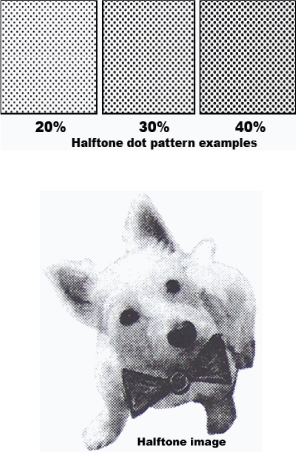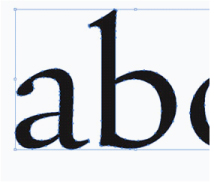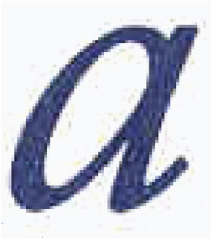Sending artwork and producing the final product gets a little tricky but that’s what our art experts do best. When in doubt, ask us first. The following information is provided for your convenience as general artwork standards. Electronic Artwork Specifications: If you are sending artwork electronically, either via email or on disk, please use the following guidelines: - Acceptable File Storage:
Diskettes or CD disc, must be PC format. - Acceptable Vector Programs & Requirements
- Vector Drawing Programs create line drawings
Supported file formats (in order of preference):
Corel Draw - .CDR files
(versions 3 through 11)
Change all "fonts to curves".
Adobe Illustrator - .AI or .EPS
(versions 3 through CS4)
"Create outlines" on all fonts.
Freehand - editble .EPS files
(versions 5 through 10)
All fonts must "convert to paths".
All eps files need to be saved as "vector" or "editable" .eps formats from vector drawing programs; not to be confused with a "raster"
A high resolution laser copy must be sent or faxed with purchase order. If unable to supply this hard copy, we can not be held responsible for translation of digital artwork. DO NOT SEND: - Color bitmaps. These are raster images - (RGB or CYMK are not accepted).
- Website .jpg graphics, these are only 72 dpi., these are low resolution pixelated bitmaps
- Graphics with fonts that are not created / saves as curves / paths / outlines.
ARTWORK - CAMERA READY We require a high quality black and white original, printed at a minimum of 600 dpi, that has crisp, sharp edges and needs no further touch up. We cannot use pre-screened/ pre-tinted artwork or printed halftones. Some thin lines, small copy and reverses may not reproduce as submitted and may be altered (usually enlarged) to imprint clearly. Please send Art Camera Ready and Separated if multiple color.
Previously printed. These items below are not camera ready: - Fax
- Photocopies
- Letterhead
- Newspaper prints
Artwork is enlarged and reduced proportionately by both width and length. Therefore if you request the maximum imprint area, only one of the dimensions may be the maximum as printed in the catalog. Please request a paper proof if size is critical. OFFSET PRINTING
No trapping or overprinting, multiple colors must be butt registered. No additional charge if this is done. FILE FORMATS We Accept the above vector drawing program file formats and their vector .eps created files. Vector EPS files are the standard, however, we can accept photo programs Black & White Bitmap raster image type files: We only accept these raster images and formats if they are monochrome (Black & White) and they must be a very high resolution (600dpi or greater). File formats that we do not accept (page layout programs such as): - MS Word
- Pagemaker
- Quark Xpress
- .doc
- .pub
- .vcf
- .dxf
- .exe
- .dat
HALFTONE SCREENS Halftones dot patterns are created to make a continuous tone (photo) image or tinted percentages of solid colors acceptable for the print process. Artwork with halftones and tints can not be viewed by email since computer monitors visually show continuous tones only. Also due to faxed transmission quality, proofs sent via a fax can not properly reflect the halftone pattern because of distortion. If artwork contains HALFTONES or TINTS contact the factory for more information. The use of halftone photographs is strongly discouraged. Although the factory will print to the best of its ability, the factory assumes no responsibility for the outcome of printing halftone dots. (See specially created halftone representations below). 
IMAGE RESOLUTION Unless you are providing the native vector file, resolution is very important. For a quality print, we require a 600 ppi (pixel per inch) resolution. Low resolution is 72 ppi web images like above. High resolution 600 ppi images are required. When printed, the 72 ppi image will look blurry and pixelated. CLIP ART There are thousands of clip art images available. If you require us to research clip art, the fee will be $20.00 (V) to research and process it. Paper proofs are required when clip art research has been done. FONTS A common problem in transferring artwork files is that the fonts the customer uses may be special fonts on the customer’s computer. When placing type in the artwork there is a link created to the font on the system. When the file is opened on another computer that does not have the font, the program opening the file will display an error and substitute it's own font for the original. To avoid this problem all art containing fonts, should have fonts converted to curves, outlines or paths. REGISTRATION There will be a variation of 2-4% (1/16" to 1/8") on 2-4 color registration. Press proofs are strongly recommended on artwork with close registration. 100% perfect registration cannot be held. EMAIL REQUIREMENTS - Must meet all the requirements for digital artwork files.
- Files must include:
- distributor company name,
- contact name,
- phone number and
- purchase order number.
- Name art file the P.O. # or logo name - not "cup" or "napkin" only.
ISSUES WITH ARTWORK? Q: Can you make artwork from my rough sketch?
A. Our experienced computer artists are capable of creating (or recreating) artwork. There is a fee for this service based on the individual specifications, check with customer service for a quote.
Q: Raster Art, Need Vector art.
A. Create art in curves/outlines which turns to graphic outlined vector art. Photo images or pictures are raster images that are made from pixels, not outlines like vector art. Create in vector drawing program, not raster programs like Paint or Photoshop.
Q: What is a vector image?
A: A vector image, also known as line art, is defined as a series of points joined by lines. Graphic elements in a vector file are called objects. Each object is a self contained entity with properties such as color shape outline, and size. Each of these properties can be changed within a vector file, without effecting any other object within the file. Notice, when you enlarge the vector file, it does not pixelate. This scalability is the feature that makes vector files preferable to raster files. See vector image below.

Q: What is a bitmap (raster) image?
A: Bitmap images are also called raster, or paint images, and are made of individual dots called pixels. These pixels are arranged and colored differently to create a desired pattern. These pixels combine to create the appearance of continuous form and color of the created image. The closer you zoom to a bitmap image you will be able to see each individual pixel as a small square that is used to make the image. You will also notice that even straight lines appear jagged when they are on an angle. Because a bitmap image is made up of pixels, the seemingly individual components (fonts, shapes, colors) are pixelated and cannot be manipulated individually as can be in a vector image for preparing image for the print process. Scaling raster files creates pixelation as seen below. 
Q: Small Type
A: Small type or reversed copy may blur during production. Q: Missing or Substitute fonts.
A: When the person that created the computer file has a certain font specified in the file but we do not have that font on our computer system, our system substitutes the font that is needed with a default font, the best solution to this problem is to convert fonts to outlines/curves in drawing program before sending the file.
Q: Detail will fill.
A: When there is more detail in a picture/computer file than the press can hold resulting in for example two thin lines next to each other mesh together to create one slightly thicker line.
Q: Text will fill in.
A: Small type or reversed copy may blur during production. When small text is reversed out of dark color, ink spreads to fill text area. Solution: Make text larger or bolder. Q: Low Resolution artwork.
A: Send better quality high resolution art work (vector art is preferred). Q: Which Art?
A: If there are two or more different looking images in a file or two or more different files then we need to know which piece of artwork is to print. Q: Registration.
A: Registration is the ability to line up two or more colors on a finished product and keep the two colors in the same position over time, may be as far as 1/8" out of alignment with the first one or two colors. Solution: The best solution to this problem is to move the colored sections farther apart so as to make the problem less noticeable or use one color.
Q: Tones must be 20-40%.
A: Any tone larger than 40% will turn to 100% and any tone lighter than 20% will turn to 0%. Thus, all tones must be either 0%, 20-40%, or 100% on all presses.
Q: No gradients
A: Gradients are tones that fade from one color to another and are not 100% solid color. They become halftone dots when output for printing. All tones less than 20% will turn to 0% and tones darker than 40% will turn to 100% solid fill. Q: Ink on Color Substrates
A: Color ink is incorrectly assumed to appear to be the same color regardless of the color substrate underneath the printed ink. Bright ink colors, such as yellow, white and orange, may not appear to be correct when printed on dark colored substrates. ie. White ink may appear gray on black items or slightly pink on red items. In many cases bright ink colors must be under printed with white ink first. This is also a consideration when printing multiple colors on top of one another. Call factory with any questions regarding color match on color or dark substrates. Q: Placed Images Missing
A: Include all support image files placed or imported into file when sending your artwork. Need more help? Here are 5 more design tips...
Selecting your colors - use Pantone Colors
Scanning images - scan at 600 dpi
Supply your native application file
Always provide a hard copy
Work at actual size - 100% of final output Questions? Let us help! Contact the us for more information.
Your questions are answered with the expertise to guide you to the most efficient solutions. |